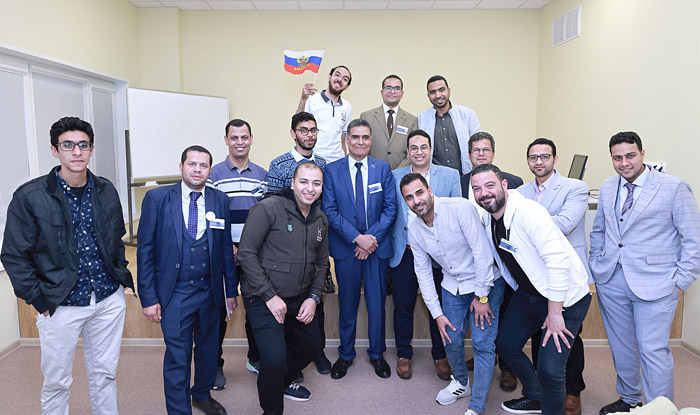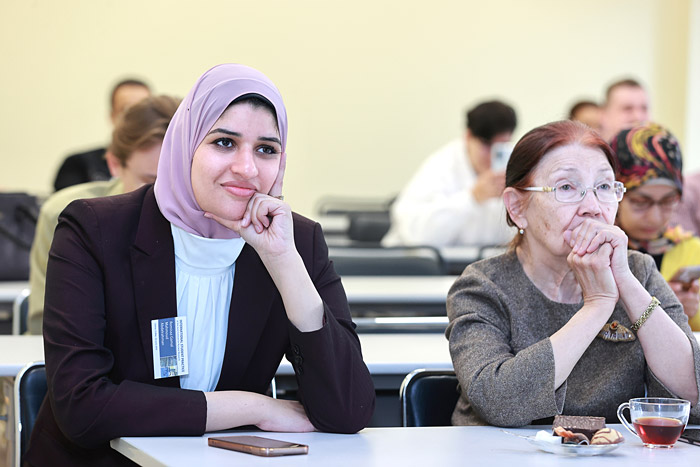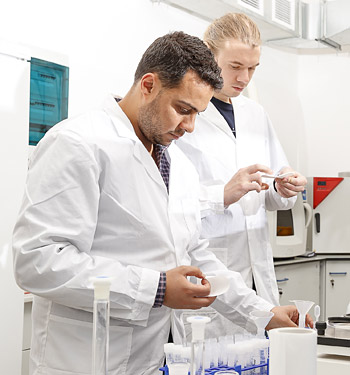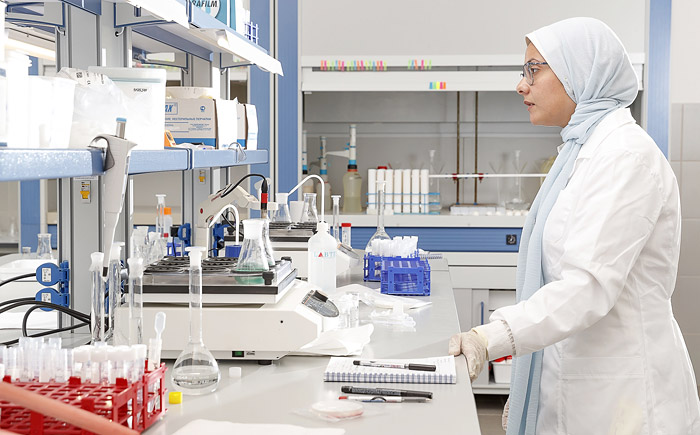
Electronic english version since 2022 |
The newspaper was founded in November 1957
| |
|
Number 21 (4669) |
Meridians of cooperation
R.Gamal: "There are a lot of talented people here"
On 16 May, the first stage of the International Student Practice organized by the JINR University Centre started at the Joint Institute. 22 trainees – students and young scientists from universities and research centres of the Arab Republic of Egypt – came to Dubna for three weeks.
During the first week of the practice, they listened to lectures on research conducted at JINR and the basic facilities of the Institute, went to excursions to VBLHEP, FLNR, FLNP, DLNP, MLIT. In addition, they learned more about the history of Russia and went sightseeing in Moscow.
For two weeks, trainees from Egypt worked in laboratories on educational and scientific projects. On 2 June, they defended their projects, and many supervisors came to support them. Head of the International Cooperation Department Otilia-Ana Culicov welcomed the participants of the practice. She noted that cooperation with Egypt is quite important for JINR. The co-leader of the practice professor Mona El-Naa also addressed the audience and thanked her colleagues from JINR for their efforts.

Head of the VBLHEP Hadron Physics Group Elena Kokoulina:
– Yara Shousha, a student, participated in our educational project “Soft photons at U-70 and Nuclotron”. She proved to be very serious, meticulous, and responsible, trying to get to the heart of things. Our project is devoted to modeling the registration of soft photons using a calorimeter. We offered her to choose between two types of calorimeter, the “spaghetti” and the “sandwich” one, which we often call “shashlik”. She chose the latter. We taught Yara how to work in the Root system and introduced her to the operation of such extremely useful software for our field as Geant4. Unfortunately, the practice time is very limited, only two weeks, so we had to give her references where she could get information on her own. The first week of practice was devoted to excursions to the laboratories, and it shortened the time needed to work on projects. We would like Yara to come to JINR and continue studying more seriously, get some results. I think that this internship was useful for her.

Romisaa Gamal and Elena Kokoulina are defending projects
Supervisor of the project “Neutron activation analysis and related analytical techniques in environmental and life sciences” Inga Zinicovscaia (FLNP):
– Our students Sabah and Islam were very lucky, because both of them carried out environmental research on bioremediation. Islam used inorganic sorbents, while Sabah is focused on biological purification methods. One of the areas of research in our sector is sewage water treatment using different types of sorbents. So, by getting into our sector, Sabah and Islam “hit the spot”, so to speak. We gave them several lectures, told them more about the theoretical models that we use; some knowledge base they already had. This allowed them to start working on the experiments right away. In two weeks they managed to conduct experiments and make calculations, the results of which they presented today. Next, we have a stage of processing and interpreting these data, and we plan to publish the results in the form of a scientific article.
– Will your students be among the co-authors of the work?
– Of course. They participated directly both in the experiments and in the calculations that we carried out. They are already preparing a draft of this article. Islam and Sabah are interested in further collaboration, I think it will be a great start for our future cooperation. I hope that this work will be continued.
 |
| Nikita Yushin is helping Islam Gomaa (FLNP) |
– I work at the British University in Cairo, developing sorbent materials that absorb pollutants and heavy metals. I came to JINR to learn more about neutron activation analysis and its application for water purification, since I know little about this field. I would like to deepen my knowledge in this area. The current internship can be a good start for the development of these studies in Egypt.
An FLNP senior researcher Wael Badawy added:
– This is not entirely true, because there are two reactors operating in Egypt. There are quite a lot of specialists at the Egyptian Atomic Energy Authority who conduct neutron activation analysis.
Sabah Atrees:
– I participated in this project to gain new knowledge in the field of neutron activation analysis, as well as in life sciences. I worked mainly with water purification, so I was conducting the ICP-OES spectrometry. We obtained sorbents that adsorbed toxic elements from the environment. Colleagues from the NAA FLNP sector helped me a lot. The practice was intensive, I acquired knowledge that I will use in my future research. I liked Dubna a lot, it is a wonderful quiet city.

Sabah Atrees is learning new techniques
Co-leader of the project “?rystal and magnetic structure of advanced oxide materials: neutron diffraction studies” Bulat Bakirov (FLNP):
– Four students took part in our project. They were all very motivated. Two of them had a background in this field, so we studied subtle aspects of our work with them. The other two did not have it, but they were interested. We told them about the neutron diffraction method as a whole: how the spectra are processed, how to get information of interest to us from this data, and obtained parameters of the crystal and magnetic structure of the compound. We prepared the presentation on all the results achieved on the last day. We only had two weeks to practice, and I think we gave the students as much as we could in that time.
Romisaa Gamal:
– I am a junior researcher working at the Faculty of Engineering and Technology of the Future University. In our project “Nuclear and related analytical techniques in archaeological and ecological studies” in the NAA group based on IREN Facility at FLNP we used neutron activation analysis for research in the field of ecology and archaeology. Thanks to Wael Badawy I gained a lot of knowledge in a field new to me. Before my trip to JINR I did not know about the NAA method and areas of its application. I will use this knowledge in the future, because I want to go to graduate school and hope to come here to prepare my PhD thesis.
– What did you like about Dubna and Moscow?
– I really enjoyed Dubna. It is a quiet, peaceful city with an atmosphere good for thinking and scientific work. Many talented people live here. Moscow is a big city, it has its own charm, its own interesting places.
Fouad Ismail Agwany:
– I am a researcher at the Faculty of Sciences of Menoufia University. I also learned about research using the NAA method in the field of ecology and archaeology for the first time, working on a project under the supervision of scientists Andrei Dmitriev and Wael Badawy. In a very short time spent working with the NAA group, we gained a lot of knowledge, from the theory to the application of NAA. We learned how to process data, how to use programmes we had not worked with before. Our group supervisors supported us and provided us with all the necessary materials for work.
I can say that we were trained “from scratch” and we hope to have a chance to continue working in this direction ourselves and to use the NAA method in our future studies. Perhaps we will join the research of this group. I liked Dubna, the citizens are very friendly. I hope to return here again in the near future.
Olga TARANTINA,
translation by Wael BADAWY,
photo by Elena PUZYNINA and Igor LAPENKO